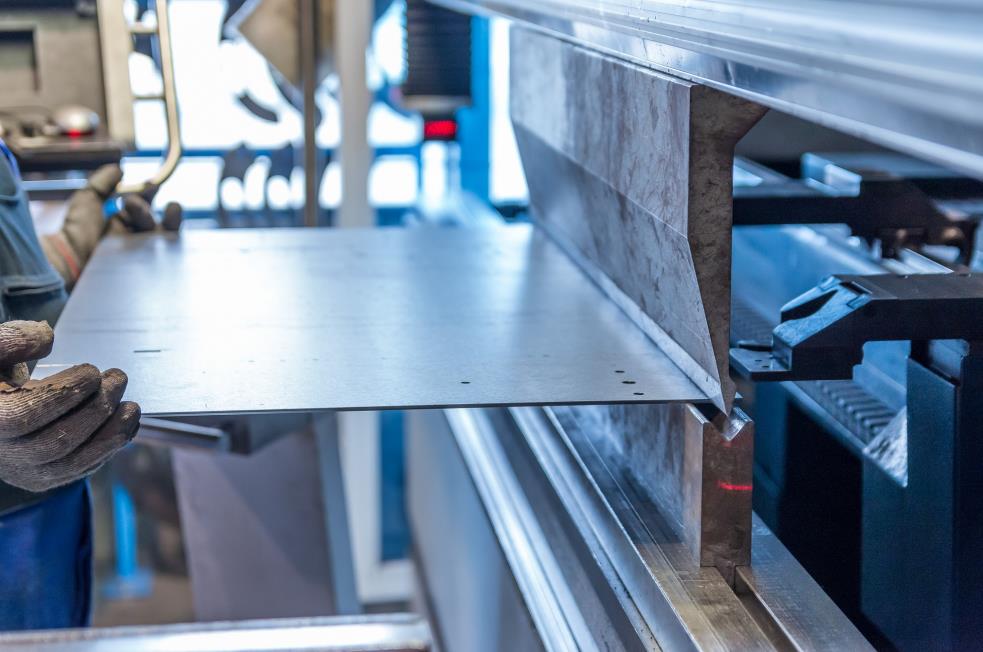The steel a knife is made from is one of the most critical things that determine whether it’s outstanding or merely passable. Without the right one, you won’t get a blade that performs well, even in the best hands. Nonetheless, forging, annealing, and heat-treating methods play a role that’s also just as vital.
65Mn high carbon steel is a widely used Chinese steel with many applications, more prevalently for making kitchen knives. It is the steel we prefer making our handmade kitchen knives. With a hardness of 58 HRc (28 to 34 HRc in its raw form) on the Rockwell hardness scale, 65Mn steel is ideal for making resilient blades.
In this article, we’ll cover everything you need to know about 65Mn steel, how it performs as a kitchen knife, what to expect, and compare it with others.
Table of contents
What exactly is 65Mn steel?
65Mn is extremely durable steel from China, recognized as one of the toughest steels with many uses, from making knife blades to shock absorbers to various tools and instruments. As 65Mn steel has many applications, it is categorized as spring steel.
Many others are comparable to 65Mn steel, but a few things make it a great knife material. It’s tough, enduring, and holds a sharp cutting edge for longer than enough for home cooks and most professionals alike.
65Mn steel chemical composition

While there is much to discuss on whether 65Mn steel makes a good knife blade or not, we can’t pass the complete chemical composition. Here is what makes a 65Mn steel.
| Element | Content (%) | What it does |
| Carbon | 0.60 to 0.70 | increases hardness, strength, and hardenability. |
| Manganese | 1.10 to 1.20 | improves hardness and decreases brittleness. |
| Silicon | 0.15 to 0.40 | decreases brittleness and helps steel stay free of damage, defects, and decay. |
| Nickel | 0.35 | increases toughness and improves corrosion resistance at high temperatures. |
| Chromium | 0.25 | makes steel resist corrosion greatly while improving wear resistance and tensile strength. |
| Copper | 0.25 | helps with corrosion resistance but to a lesser degree than chromium. |
| Sulfur | 0.03 | reduces weldability and increases brittleness, but low amounts improve machinability. |
| Phosphorous | 0.03 | improves machinability and atmospheric corrosion resistance but reduces toughness – the reason why it’s so little. |
65Mn steel as a kitchen knife blade
Now comes the most important part – how 65Mn steel performs as a kitchen knife. The same as when figuring out any knife’s worth, we need to look at how a kitchen knife made from 65Mn steel performs in different aspects.
After all, there is no perfect kitchen knife for everyone. Identifying your preferences and purchasing accordingly is what leads to having the perfect one.
Hardness
65Mn steel as a knife is more on the harder side but still soft enough to be enduring. As the steel’s hardness goes up, so does its brittleness. This makes the blade more susceptible to chipping and other damages. Although avoiding these is not a problem for cooks experienced using high carbon steel knives, most home cooks are new to them.
At 58 HRc, 65Mn steel is at a hardness that’s forgiving enough for beginners and pleasing for professionals at the same time. Combined with this steel’s natural toughness, what you get is a very durable blade that resists chipping better than most other high carbon steel.
Edge retention
An enduring high carbon steel kitchen knife perfect for heavy-duty tasks wouldn’t mean much if it doesn’t hold an edge well. Luckily, that’s not the case with 65Mn steel.
65Mn high carbon steel knives keep a sharp edge surprisingly well. Even when employed with force continuously, like breaking poultry and other smaller bones, you won’t find yourself looking for a sharpening stone often. Once you do, expect to use it for countless hours again – not to mention the time it will take before needing to sharpen it for the first time.
Durability
The higher hardness not only improves edge retention but also wear resistance. The improved wear resistance of 65Mn steel also comes from the refined grain size.
The kitchen knives or any other made from 65Mn steel are incredibly resilient and perfect for heavy-duty tasks. A 65Mn steel knife won’t find chopping through bones or cutting dense ingredients concerning. As mentioned, the relatively high manganese levels increase hardness while reducing brittleness, making it extremely tough and long-lasting.
Corrosion resistance

Largely, the chromium content in the chemical composition of steel determines its corrosion resistance. Since 65Mn steel doesn’t have anywhere enough, resisting corrosion isn’t its strongest suit.
Like any kitchen knife without enough Chromium content, drying the blade when not using it, storing it with a coat of food-grade mineral oil, and handwashing followed by drying the knife is a must. Without implementing these care methods, 65Mn steel will be prone to oxidize, which can lead to rusting.
Additionally, the blade will develop a patina over time. This is a natural process that protects the blade from further oxidation. It shows the blade’s age and adds character to it. You can force a patina on your high carbon steel knife to make this process faster or remove it. Read everything about carbon steel patina on knives.
Sharpening
Bringing a 65Mn steel kitchen knife back to life isn’t a challenging task. The chemical composition and hardness allow 65Mn steel knives to be sharpened easily and quickly. Using a basic whetstone, you can sharpen your 65Mn steel kitchen knife in a fairly quick span. This, of course, assuming that you’re using the right whetstone, starting from lower grit to sharpen and moving to a higher grit to polish – just as it should be.
When honing, utilizing ceramic rods over steel ones is a better idea, as a blade with 58 HRc hardness has a higher chance of being harder than a steel honing rod.
Handpicked for you
True cutting power in the palm of your hand
65Mn steel equivalent
The characteristics of 65Mn steel are comparable to a few other types of steel with similar compositions, namely 1064/1065 steel and 1095 steel.
1095 steel
1095 steel is basic, yet extremely popular for making various types of knives. In some cases where the application isn’t as important, 1095 and 65Mn can serve as adequate substitutes for each other with nominal differences.
1095 steel has a bit more carbon, which the 65Mn steel makes up with a higher manganese content. Due to higher carbon content, 1095 can get harder, but everything else in the 65Mn steel makes it a more resilient pick overall.
1095 vs. 65Mn: edge retention, toughness, and corrosion resistance

In most kitchen knives, 1095 steel will hold an edge for longer but require more watch for corrosion. This is because of higher carbon content without other elements offering corrosion resistance.
Even though 1905 steel’s chromium content isn’t worth mentioning as it doesn’t have any, it somewhat also applies to 65Mn steel. Nonetheless, 65Mn steel resists corrosion better than 1095 steel with other elements in the composition.
Overall, a tad bit of chromium and copper and a higher manganese range makes 65Mn steel more suitable for making kitchen knives. In a wet environment like any kitchen, knives made from 65Mn steel will have an easier time deterring corrosion than their 1095 steel counterparts. Lastly, 1095 steel is manufactured in the US and 65Mn steel in China.
1095 vs. 65Mn steel: types of knives and sharpening
Knife manufacturers favor 1095 steel for tactical knives, throwing knives, and machetes more than kitchen knives. 1095 steel is a prevalent choice among these knives because of the ease of sharpening. 1095 steel’s hardness with its chemical composition provides quick sharpening, which is essential due to how these knives are utilized.
This isn’t to say that 65Mn isn’t easy to sharpen, which it is, and most people will find it easier to do on a 65Mn steel kitchen knife than 1095, but this is a minor one.
1064/1065 steel
Comparing 1064/1065 steel with 65Mn steel is a challenging task. Both have pretty much identical carbon content, but the extra 0.3 to 0.5% manganese in 65Mn steel makes it a tougher option. It also has better tensile and yield strength than the 1064/1065 steel. When performing the same tasks utilizing 1064/1065 and 65Mn steel kitchen knives, the 65Mn would wear out less.
65Mn steel blades make better kitchen knives regardless of the identical carbon content. However, 1064/1065’s machinability allows for broader industrial uses. Other than knives, 1064/1065 steel is reasonable for making round and flat springs, manufacturing blades, brake discs, and other tools working under friction at high loads.
How to care for 65Mn steel
Caring for a 65Mn steel kitchen knife is the same as any other high carbon steel blade. Because these knives aren’t good at resisting corrosion, keeping the blade dry and applying mineral oil when storing should be a habit. Otherwise, it won’t be a long-lasting knife in your kitchen. If neglected, you will need to do a lot of work to remove oxidation from the blade, which could’ve been prevented by taking these simple measures.
While these two are the most critical things for caring for a high carbon steel kitchen knife, there are more actions you can take. Read effortless yet effective carbon steel care tips.
Takeaway
Because 65Mn steel isn’t stainless, it isn’t the best for fisherman, wet conditions, and diving knives. The 65Mn high carbon steel is mostly better suited for machetes and large blades for heavy-duty use. With thin blades, they can handle intricate work just as well. Learn more about other types of steel used for kitchen knives and how they perform on the HDMD Knives blog.












